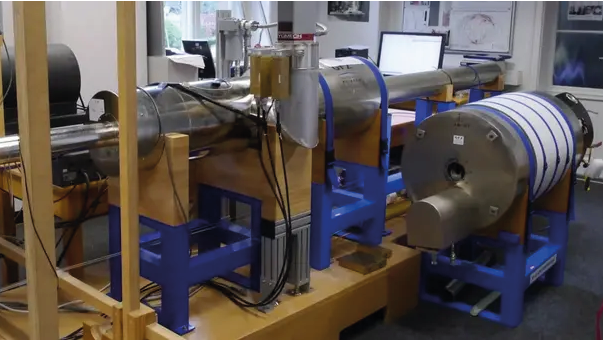Magentic Archives of System Earth
Contact:
Web:
Infrastructure belongs to:
The Laboratory for Geomagnetism in Space and Time analyzes the magnetic properties of sediments and rocks to reconstruct temporal variations in the Earth's magnetic field as well as past climate and environmental conditions. Parameters such as magnetization, coercivity, Curie temperature, grain size, and magnetic mineral concentration are examined to characterize the formation and transformation of magnetic minerals in detail. The resulting data are essential for the chronological correlation of geological archives (e.g., through magnetostratigraphy) and for interpreting paleoclimatic signals. In this way, the laboratory contributes fundamentally to paleomagnetism and rock magnetism, and to the broader analysis of Earth system history.
In addition, the paleomagnetic data generated in the laboratory contribute to understanding the dynamics of the Earth's magnetic field. They provide insights into its past changes and the underlying processes in the Earth's interior, forming an important data basis for field-based modeling approaches within the Geomagnetism Section.
Categories
Disciplinary Keywords
- Coercivity
- Curie Temperature Analysis
- Demagnetization
- Geomagnetism and Paleomagnetism
- Geophysics
- Magnetic Extraction
- Magnetic Hysteresis Analysis
- Magnetic Susceptibility
- Magnetization
- Mass-Specific Magnetic Susceptibility
- Paleogeoscience
- Remanent Magnetization
Selected infrastructures
Instrumentation
Laboratory instrumentation
Instruments
-
Demagnetizer
-
GFZ Split-Core Logger
-
Magnetic Susceptibility Bridge
-
Magnetic Susceptibility Sensor
-
Magnetizer
-
Magnetometer
Magnetometers measure the Earth's magnetic field intensity. (Source: Global Change Master Directory (GCMD). 2023. GCMD Keywords, Version 16.3. Greenbelt, MD: Earth Science Data and Information System, Earth Science Projects pision, Goddard Space Flight Center (GSFC) National Aeronautics and Space Administration (NASA). URL (GCMD Keyword Forum Page): https://forum.earthdata.nasa.gov/app.php/tag/GCMD+Keywords)
-
Spectrophotometer
Spectrophotometers are photometers that measure the intensity of radiation as a function of frequency (or wavelength) of the radiation; radiation enters the meter through a slit and is dispersed by means of a prism. (Source: Global Change Master Directory (GCMD). 2023. GCMD Keywords, Version 16.3. Greenbelt, MD: Earth Science Data and Information System, Earth Science Projects pision, Goddard Space Flight Center (GSFC) National Aeronautics and Space Administration (NASA). URL (GCMD Keyword Forum Page): https://forum.earthdata.nasa.gov/app.php/tag/GCMD+Keywords)
-
Variable Field Translation Balance
The variable field translation balance (VFTB) is an instrument for measuring isothermal magnetizations in variable fields (e.g., hysteresis loops) as well as the temperature dependence of the associated magnetic parameters. It is specifically designed to measure the weak magnetizations commonly encountered in rock magnetism. (Source: https://doi.org/10.1007/978-1-4020-4423-6_312)
Links
Data Publication
Key Publication
- Nowaczyk, N.R. (2021) Redeposition experiments with natural sediments from the SE Black Sea in magnetic fields between about 2 and 114 µT. Geophysical Journal International, 224, 1, 271–289.
- Nowaczyk, N.R., et al. (2012) Dynamics of the Laschamp geomagnetic excursion from Black Sea sediments. Earth and Planetary Science Letters, 351-352, 54-69.
- Nowaczyk, N.R., et al. (2021) Records of the Laschamps geomagnetic polarity excursion from Black Sea sediments: magnetite versus greigite, discrete sample versus U-channel data. Geophysical Journal International, 224, 2, 1079–1095.
